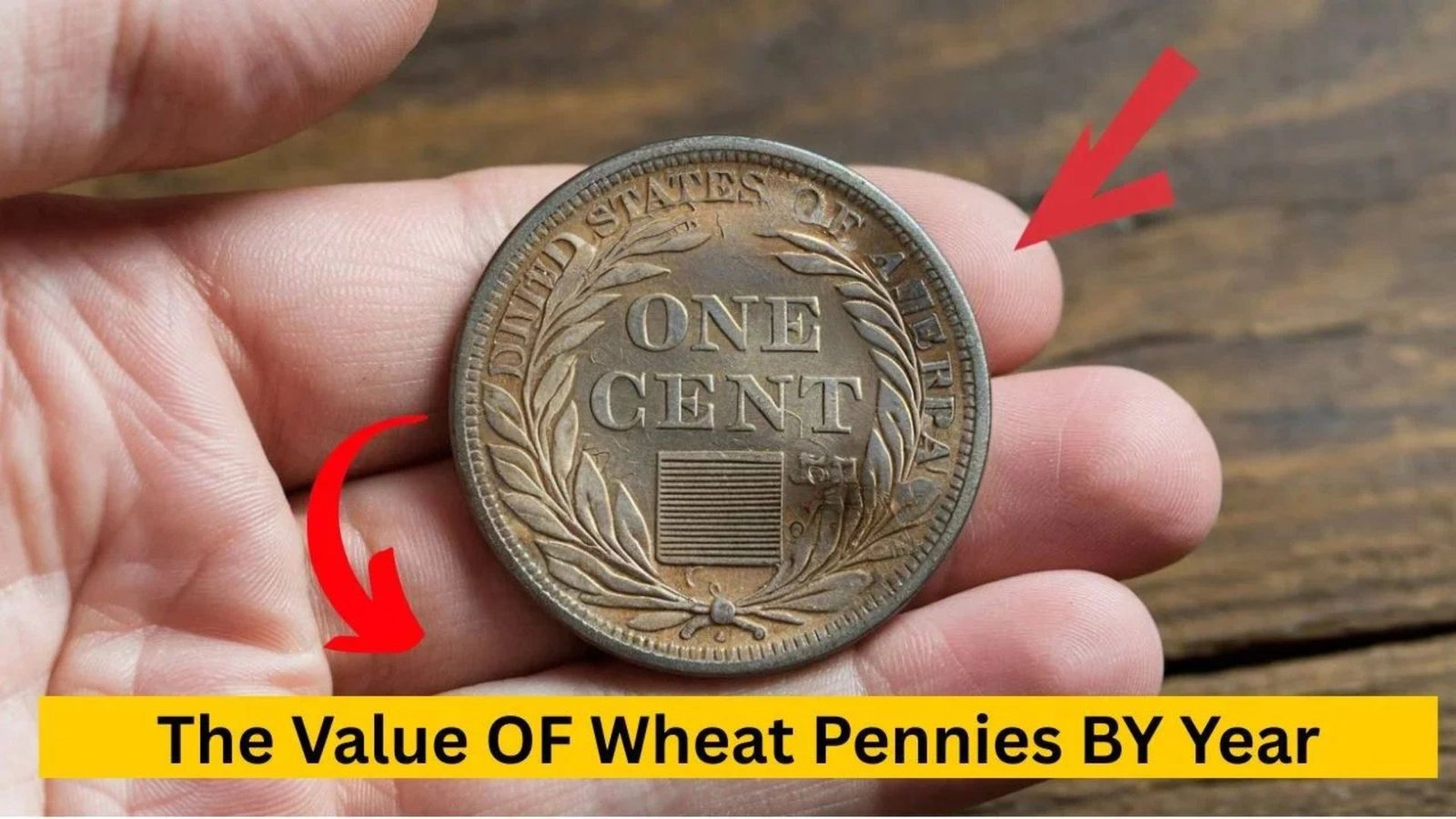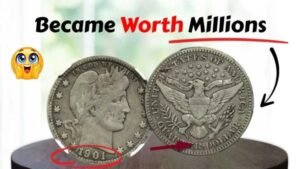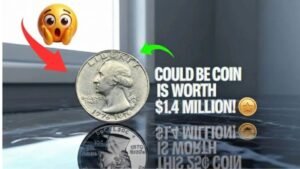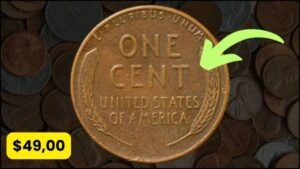Wheat Pennies, also known as Lincoln Wheat Cents, are a favorite among coin collectors due to their history, design, and potential value. Minted from 1909 to 1958, these coins feature Abraham Lincoln on the front and wheat stalks on the back. Whether you’re a beginner or a seasoned collector, understanding the value of Wheat Pennies by year can help you spot treasures in your collection. This guide breaks down their worth, key dates to watch for, and tips to maximize your collection’s value—all in simple, easy-to-understand language.
What Are Wheat Pennies?
Wheat Pennies are U.S. one-cent coins produced by the United States Mint between 1909 and 1958. Designed by Victor David Brenner, they were the first coins to feature President Abraham Lincoln. The reverse side shows two wheat stalks, giving them their nickname. Their historical significance and varying rarity make them a must-have for coin enthusiasts.
Why Are Wheat Pennies Valuable?
The value of Wheat Pennies depends on several factors:
- Year of Minting: Some years are rarer due to lower production numbers.
- Condition: Coins in better condition (less wear, clearer details) are worth more.
- Mint Mark: Indicates where the coin was made (e.g., “D” for Denver, “S” for San Francisco, or no mark for Philadelphia).
- Rarity and Errors: Certain years or minting mistakes (like double dies) can significantly increase value.
Wheat Pennies Value by Year: Key Dates to Know
Below is a detailed look at some of the most valuable Wheat Pennies by year, focusing on rare dates and their estimated values in average circulated condition (unless stated otherwise). Note that values can vary based on condition and market demand.
High-Value Wheat Pennies
1909-S VDB
- Value: $700–$2,000+
- Why It’s Special: This was the first year of Wheat Pennies, and the “S” mint mark with the designer’s initials (VDB) makes it rare. Only 484,000 were minted.
- Tip: Look for the VDB initials on the reverse near the wheat stalks.
1909-S
- Value: $100–$300
- Why It’s Special: Low mintage of 1.8 million makes this coin desirable, even without the VDB initials.
1914-D
- Value: $150–$500
- Why It’s Special: With only 1.2 million minted, this Denver coin is a collector’s gem.
1922 No D (Plain)
- Value: $500–$2,500
- Why It’s Special: A minting error where the “D” mint mark is missing, making it one of the rarest Wheat Pennies.
1931-S
- Value: $60–$200
- Why It’s Special: Only 866,000 were minted, making it a key date for collectors.
1955 Double Die
- Value: $800–$1,800
- Why It’s Special: A famous minting error where the date and lettering appear doubled, highly sought after by collectors.
Common Wheat Pennies Value
Most Wheat Pennies from the 1940s and 1950s are common and worth $0.05 to $0.50 in circulated condition. However, coins in uncirculated or near-mint condition can fetch $5–$50 or more, depending on the year and mint mark.
Wheat Pennies Value Table by Year
Here’s a quick-reference table for some notable Wheat Pennies and their approximate values in average circulated condition. Prices are based on recent market trends and may vary.
| Year | Mint Mark | Estimated Value | Notes |
|---|---|---|---|
| 1909-S VDB | S | $700–$2,000+ | Rare, designer’s initials on reverse |
| 1909-S | S | $100–$300 | Low mintage, high demand |
| 1914-D | D | $150–$500 | Scarce Denver issue |
| 1922 No D | None | $500–$2,500 | Minting error, no mint mark |
| 1931-S | S | $60–$200 | Low mintage, key date |
| 1955 Double Die | None | $800–$1,800 | Famous error coin |
| 1943 Bronze | None | $50,000–$100,000+ | Extremely rare error (most 1943 pennies are steel) |
| 1944 Steel | None | $10,000–$75,000 | Rare error, steel instead of copper |
Note: Values are approximate and depend on condition. Uncirculated coins or those with errors can be worth significantly more.
How to Determine Your Wheat Pennies Value
To find out how much your Wheat Pennies are worth, follow these steps:
1. Check the Year and Mint Mark
Look at the date on the front and the mint mark (if any) below the date. Common mint marks are:
- No Mark: Philadelphia Mint
- D: Denver Mint
- S: San Francisco Mint
2. Assess the Condition
Use a magnifying glass to check the coin’s condition. Look for wear on Lincoln’s face, the wheat stalks, and the lettering. Coins are graded from Poor (heavily worn) to Mint State (no wear). Better condition means higher value.
3. Look for Errors
Errors like double dies (blurry or doubled text) or missing mint marks can make a coin more valuable. The 1955 Double Die and 1922 No D are prime examples.
4. Consult a Professional
For rare or high-value coins, get them appraised by a professional coin dealer or grading service like PCGS or NGC. They can provide an accurate value based on condition and authenticity.
Tips for Collecting Wheat Pennies
- Start with Common Dates: Begin with affordable Wheat Pennies from the 1940s and 1950s to build your collection.
- Store Properly: Keep coins in protective holders or albums to prevent damage.
- Focus on Key Dates: Save up for rare years like 1909-S VDB or 1914-D to boost your collection’s value.
- Join Coin Communities: Connect with other collectors through forums or local clubs to learn and trade.
- Stay Updated: Coin values change with market trends, so check price guides like the Red Book or online auctions regularly.
Where to Find Wheat Pennies
You can find Wheat Pennies in:
- Coin Rolls: Check bank rolls or loose change for hidden treasures.
- Coin Shops: Local dealers often have Wheat Pennies for sale.
- Online Marketplaces: Websites like eBay or Heritage Auctions offer a wide selection, but beware of counterfeits.
- Flea Markets and Estate Sales: These can yield unexpected finds at low prices.
Why Collect Wheat Pennies?
Collecting Wheat Pennies is more than a hobby—it’s a journey through history. Each coin tells a story of its time, from the early 1900s to the post-World War II era. Their affordability makes them accessible to beginners, while rare dates and errors excite experienced collectors. Plus, the thrill of finding a valuable coin in a pile of change is unbeatable!
Final Thoughts
Wheat Pennies are a fantastic way to dive into coin collecting. By focusing on key dates like the 1909-S VDB, 1914-D, or 1955 Double Die, you can uncover coins worth hundreds or even thousands of dollars. Use the value table and tips in this guide to start or grow your collection. Happy hunting, and may you find that rare Wheat Penny to make your collection shine!




